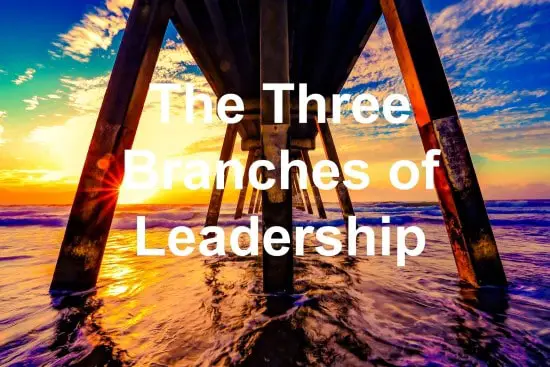For over 200 years, the United States Constitution has been the litmus test of liberty in our country. It has helped “We the People” remain free in a world that can quickly devolve into tyranny. Our forefathers, the writers of this document, tried to put as many protocols in place to balance the leadership of the United States. They saw the dangers of giving one person, or even one body, all the power, so they in turn created three separate but equal branches of government – the legislative, executive, and judicial branches.
Just like our very own country, most organizations need a balance of power. This isn’t just true in the structure of an organization, but also with the strengths of each individual leader in it. Try working for an organization where no leader is gifted in administration skills, and you will quickly see why balance is needed for success.
For years, I’ve heard that there are only two different types of leaders – dreamers and doers. The dreamers are your intuitive fore-thinkers, and the doers put those thoughts into real life. It was easy and clear cut, but it was also incomplete. Recently I was reading up on church growth, and the author shared that there is a third type of leader – a person who can decipher or judge the efficiency of programs and the way things are run. Without this crucial leader, many organizations would be incomplete. It would be like having Congress and The Cabinet without the Supreme Court.
So, let’s take a look at these leaders and why they are important to an organization.
The Dreamers (The Legislative Branch) – Inspired by the Future
The Dreamers are usually the most obvious person to spot. They are the person who has a vision for the future. A good Dreamer understands that staying in the present is not an option. The future has better and brighter things. They are the person who creates the mission and vision. They are the chess player that sees two moves ahead. In a governing body, they are the ones who make the laws, shaping the way society will react and grow in the future. They may react with the present-tense, but it is with the future in mind.
The potential pitfalls of being a Dreamer is that there might never be stability for them. They are always wanting to do things bigger and better and never take time to enjoy where they are at in the present moment. They also need to work on making sure their vision of the future is clear to those they work with. This type of leader can quickly become controlling if they think the rest of those they work with “don’t get” the same future their casting. They also need to watch out for other Dreamers who have a different picture of the future.
The Doers (The Executive Branch) – Inspired by the Present
Doers are usually the least opinionated person in the crowd. They just want to be told what to do and get it done. They don’t see the point in sitting and talking about the future. Nothing will change if they don’t do anything to change it. Doers are fully in the present. They are the type of person who doesn’t want to waste time reading about leadership. They just lead. They are like the police force of an organization, enforcing the vision set by the legislators they work with. These people are quick to understand vision and they know the steps that it takes to make it a reality. They are easy to work with and are usually the most teachable leaders in an organization.
However, Doers can easily get caught in a routine and not worry about the future. If things are working in the present, they don’t worry about future problems. They don’t prioritize innovation. For the most part, organizations with mostly doers have minimal success. They may get by, but they rarely grow. They are unable to adapt to the times. They need to watch out and make sure they aren’t just coasting or getting lost in busy work.
The Deciphers (The Judicial Branch) – Inspired by the Past
Deciphers are the people who understand the values of the organization. Their number one priority is efficiency. How can the organization get better at what they are doing? They are the Supreme Court – evaluating and assessing the vision to make sure the ship is heading on the right course. They lead from the past, using history to glean from prior fortunes and failures. They are usually the most overlooked type of leaders in an organization, but they are usually the most valuable. They represent the pulse of the organization and are the advocates of the consumers.
Deciphers need to be careful not to focus solely on the negative. With efficiency, it is easy for them to see the wrong, but they usually struggle admonishing the things an organization is doing right. If something is wrong, they tend not to know how to fix it. They just share the problem. For Deciphers to be valuable and heard in an organization, they need to have suggestions on how to be more efficient. They need to be able to replace bad ideas and programs with good ones.
Question: What type of leader are you and what strengths and weaknesses do you bring to your organization?
If you would like to guest post, please check out the Guest Post Guidelines for JMLalonde.com.



Please note: I reserve the right to delete comments that are offensive or off-topic.